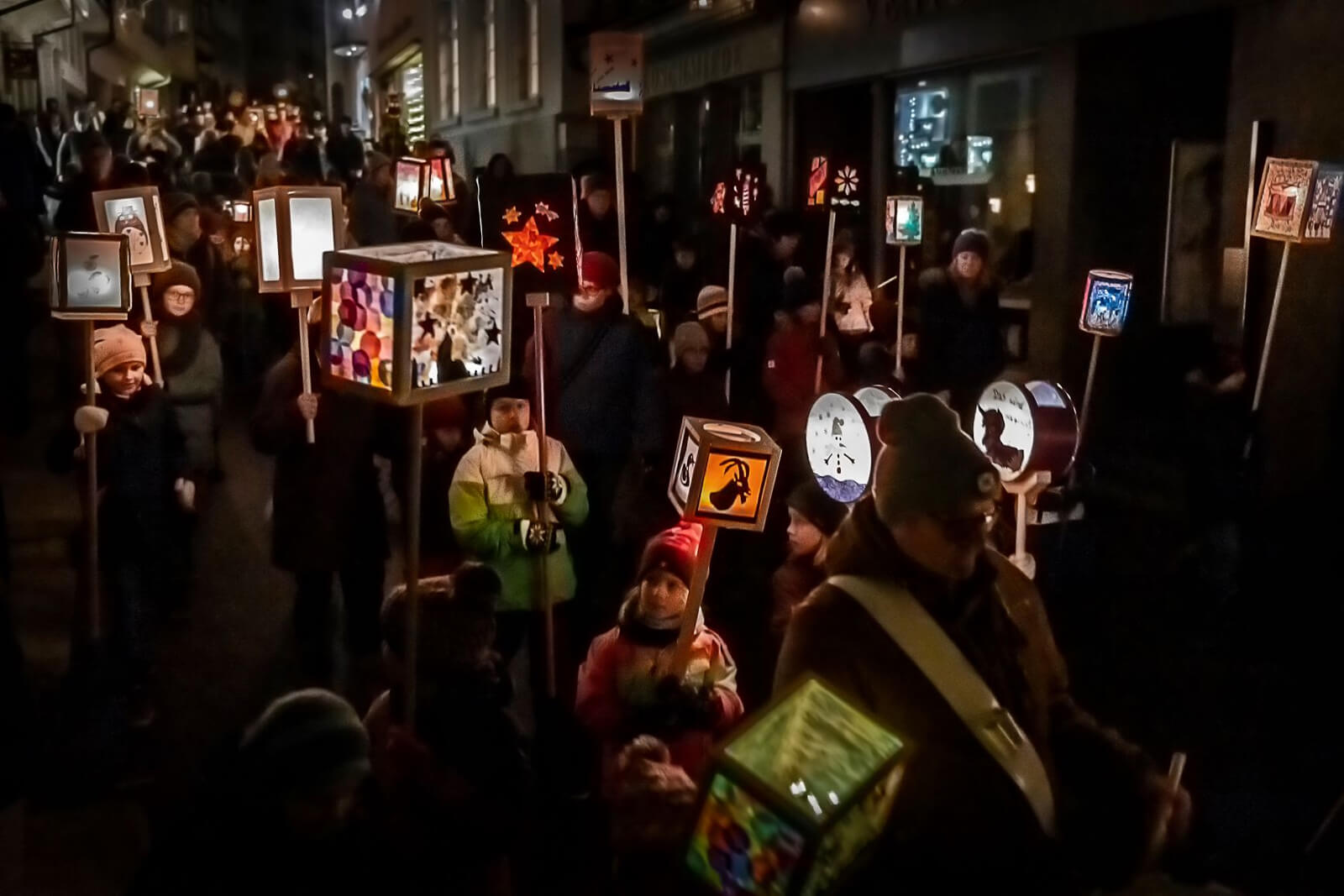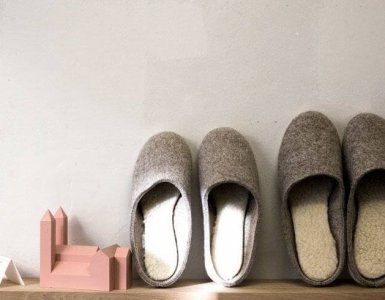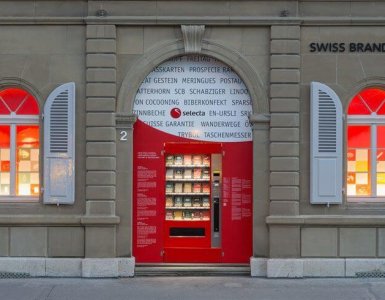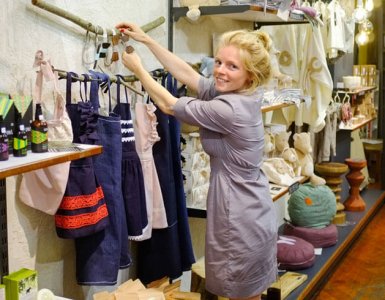New Year’s Eve traditions from Switzerland involve more than popping corks. Rather, villages and towns end the old year with noisy parades featuring masked figures, drums, bells and whip cracking.
According to age-old beliefs, December 31 is all about warding off evil spirits and demons. I was familiar with a couple of Sylvester traditions, but I wanted to find them all. From Appenzell to Lausanne, I have researched all the living traditions happening on New Year’s Eve in Switzerland.
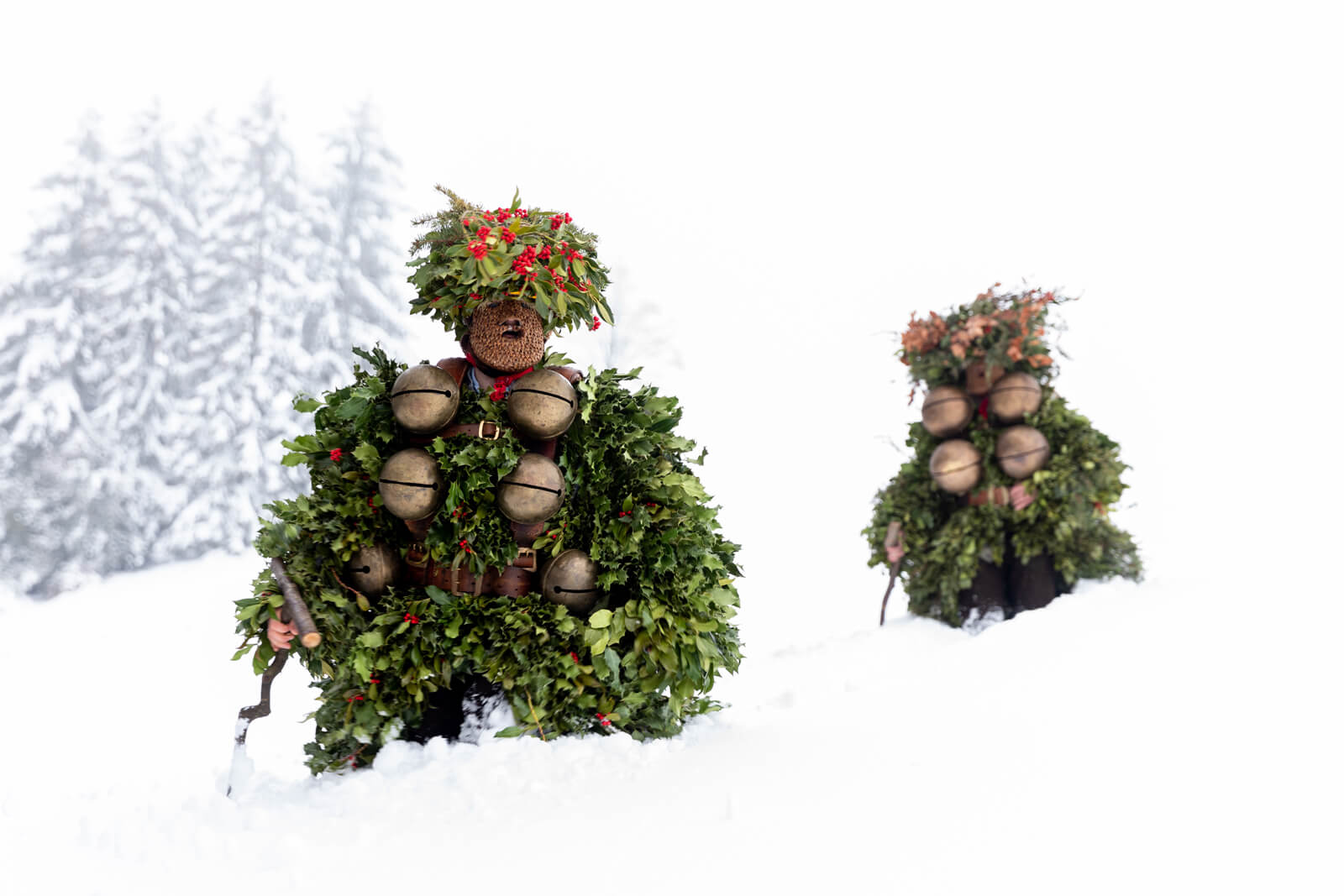
Here's the definite list of living New Year’s Eve traditions from Switzerland:
Räuchle in Appenzell
This tradition has three repetitions, one each on Christmas Eve, on New Year’s Eve and on Epiphany. It is specific to Appenzell where altar boys would walk the street with smoking barrels. Back in time, the idea was to spread frankincense in order to drive away demons. Today, it is rather a Christian blessing for the community.
In households, families would commonly use a pan filled with hot coal and frankincense. The head of the household would spread the incense throughout the house and barn, as well as on their entire property. Then, the family would assemble in the living room for prayers against accidents and malice.
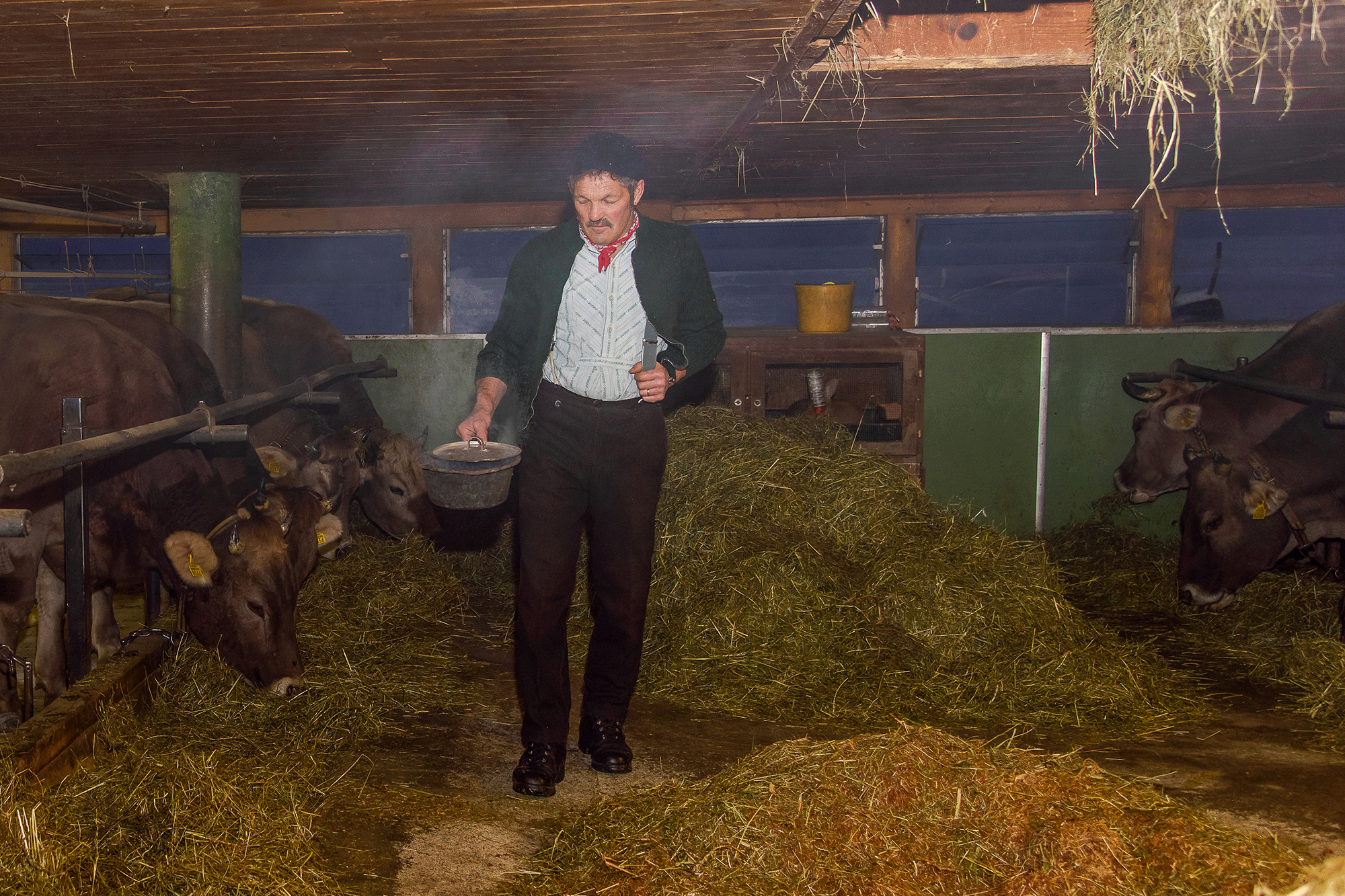
Chant da Goita in Bergün
In many Grison communes, it is common for the locals to sing together in a central space. Take Bergün where every New Year’s Eve, residents and visitors meet in the Oberdorf at 10 PM. They would commence to sing both Romansh and German songs until shortly before midnight. This is when they chime in to the most significant song called Ün mumaint e l’ura batta, which translates to “only a few more seconds”.
Silvester-Treichler in Märstetten
The Silvestertreichler tradition in Märstetten is a unique and vibrant event that has been celebrated since 1982. Every New Year's Eve morning, starting at 4 AM, the town comes alive with the sound of Treicheln bells. The Silvestertreichler group parading through the village carries large bells weighing between 26 to 34 kg.
The group, consisting of 16 members, was founded with the aim of putting an end to mischievous New Year's Eve pranks. The rhythmic and archaic sound of the bells creates a mesmerizing atmosphere to drive away evil forces and welcome the New Year.
Silväschter-Trösche in Hallwil
In Hallwil, it is a New Year’s Eve custom to light a large bonfire on top of the Bruderhübel hill. This is where the locals meet to ring in the new year. The so-called Drescher, a group of eight men, are not only in charge of the bonfire. They are also performing a unique ritual in which they begin to thresh a wooden board placed next to the fire at about 11:50 PM.
The rhythmic motion when either two, four, six or all eight thresh the board with their flails is supposed to get rid of evil spirits and welcome the new year. Shortly before midnight, they will stop the action, to continue with more force only once the new year has begun.
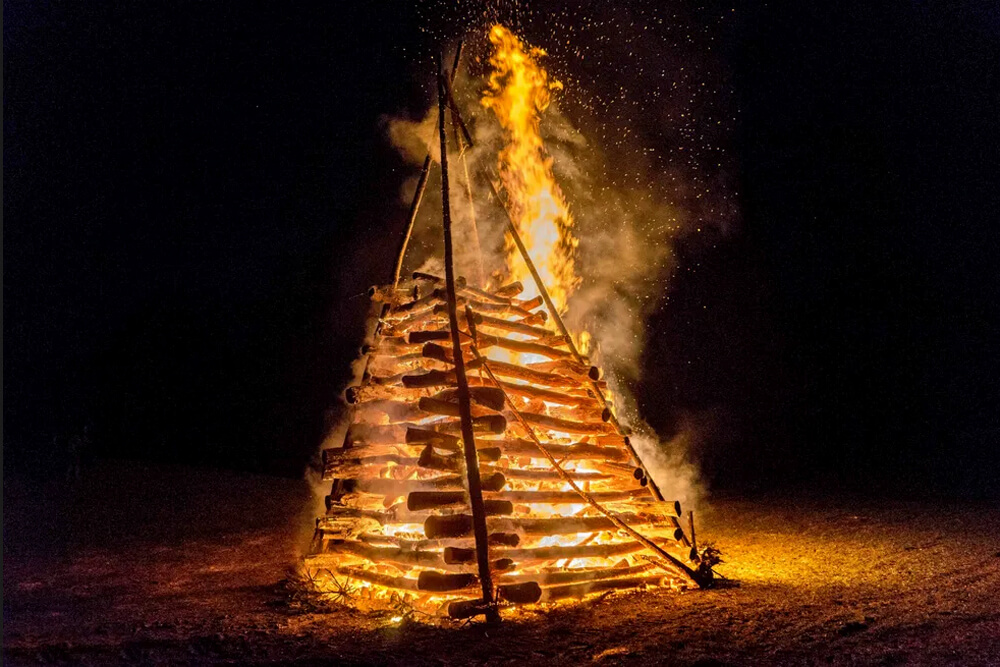
Achetringele in Laupen
Achetringele is Laupen’s tradition of celebrating winter solstice. For centuries on New Year’s Eve, two groups of boys would descend from the Laupen castle to the old town. The first group, called Bäsemänner (broom men), are a mischievous bunch: concealed with scary wooden masks and armed with brooms and inflated pig bladders, they have a habit of chasing after girls.
The group that follows, called Tringeler (bell ringers), are dressed in white gowns. In order to purge evil spirits, it is their duty to ring the cow bells that are strapped around their waists. In the old town, many locals would open their windows for evil to depart and fortune to arrive.
Cathedral illuminations in Lausanne
Every Saint-Sylvestre since 1904, the people of Lausanne have gathered on the Esplanade de la Cathédrale. When the clock strikes midnight, the Gothic cathedral is illuminated with fire which has been placed on three floors of the bell tower.
The illusion that the cathedral is on fire is also a sign for the locals to start toasting with champagne and mulled wine.
Trychler in Meiringen
In the Bernese Alps, and specifically in the Haslital valley, it is common for drummers and bell ringers to make their rounds between Christmas and New Year’s. Thanks to their rhythmic chiming, the Trychler are said to chase away evil.
On the last day of the traditional Trychler week, which happens to be New Year’s Eve, the various groups converge in the town of Meiringen for one final demon killing “bell dorado”.
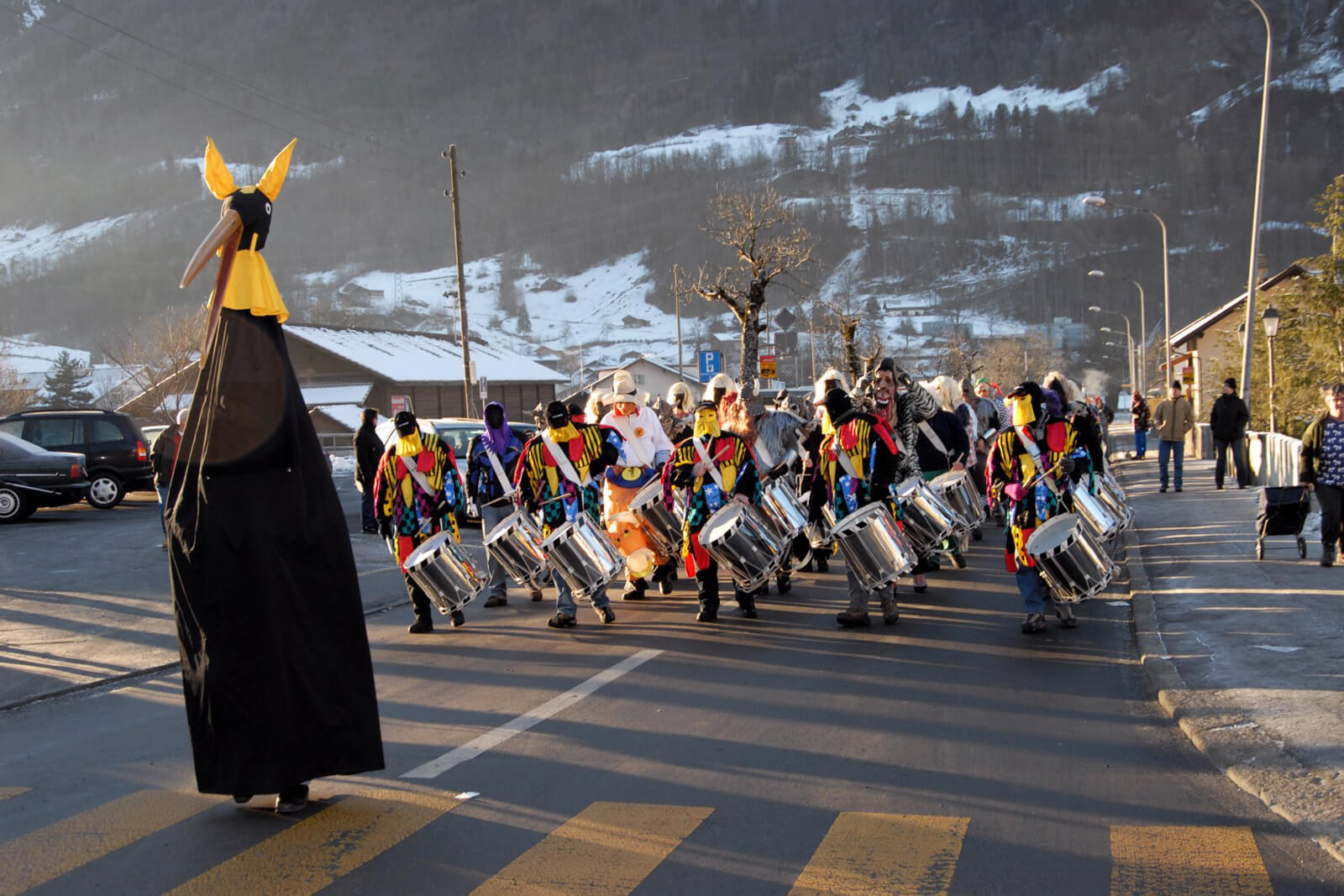
The smith of luck in Möhlin
For more than sixty years, a smith has been forging a horseshoe on New Year's Eve. Since the process begins in the old year and ends in the new year, this act could not be any more symbolic...
At the Schmittenbrücke bridge in Möhlin, Mr. Mahrer starts the action at exactly 11:53 PM. This is the first time the horseshoe is hammered, followed by another heating session. And by 0:03 AM, the new horseshoe is complete. Back in 1956, it was just a spur-of-the-moment idea, but the locals insisted he repeat this ritual every year moving forward.
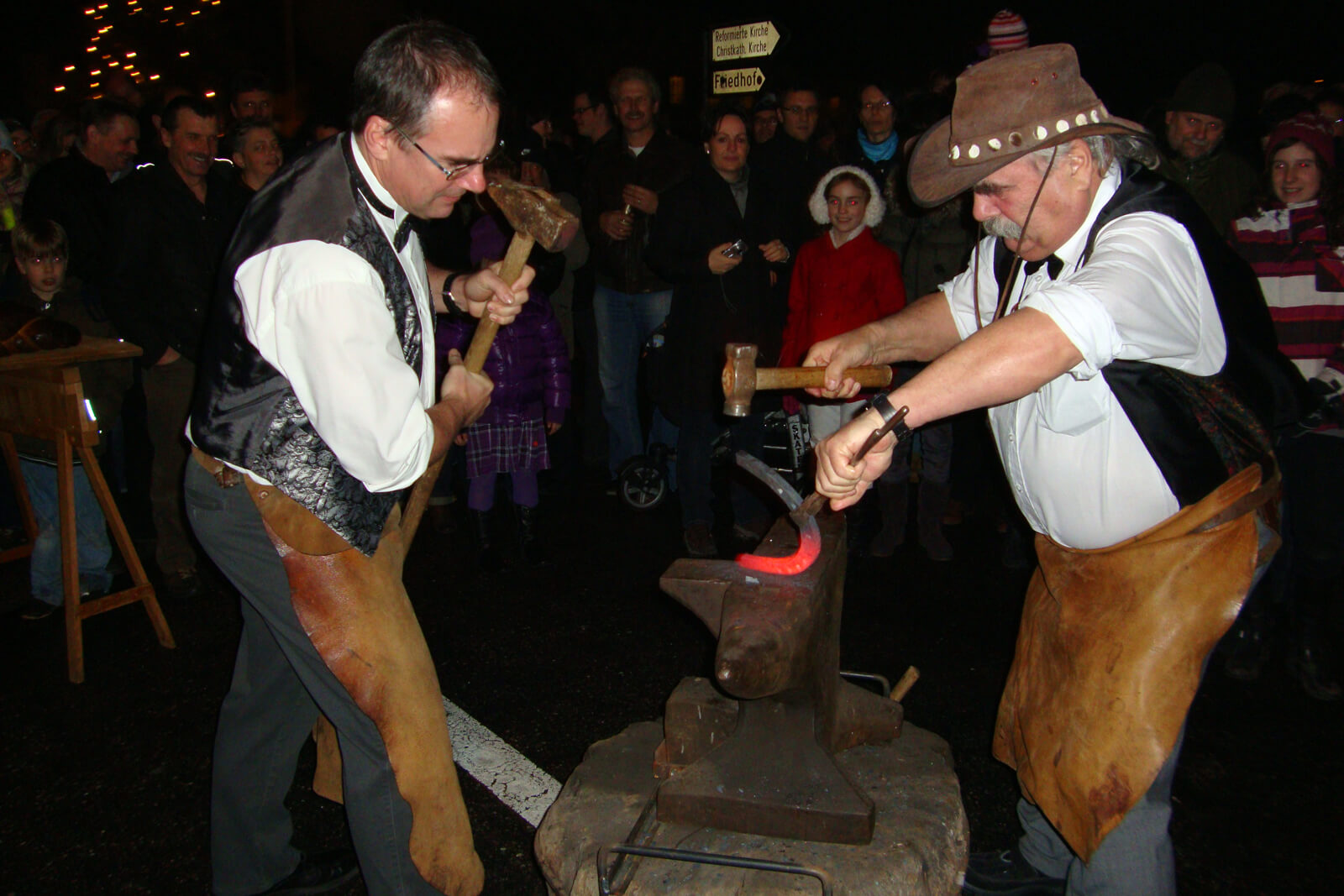
Brunnensingen in Rheinfelden
It is hard to fathom how a tradition can survive for centuries. The fountain singing custom of Rheinfelden dates back to 1541, a time when locals tried to get rid of the pest. It was believed that the disease was spread through water, hence the fountains were sanctified with Christmas songs.
Still today, a group of a dozen men in black coats and top hats will walk the alleys of Rheinfelden on New Year’s Eve. While stopping at each of the six fountains, the members of the Brotherhood of St Sebastian will perform a New Year's song. And after the parade, an organ concert at St Martin's Church traditionally rings in the new year.
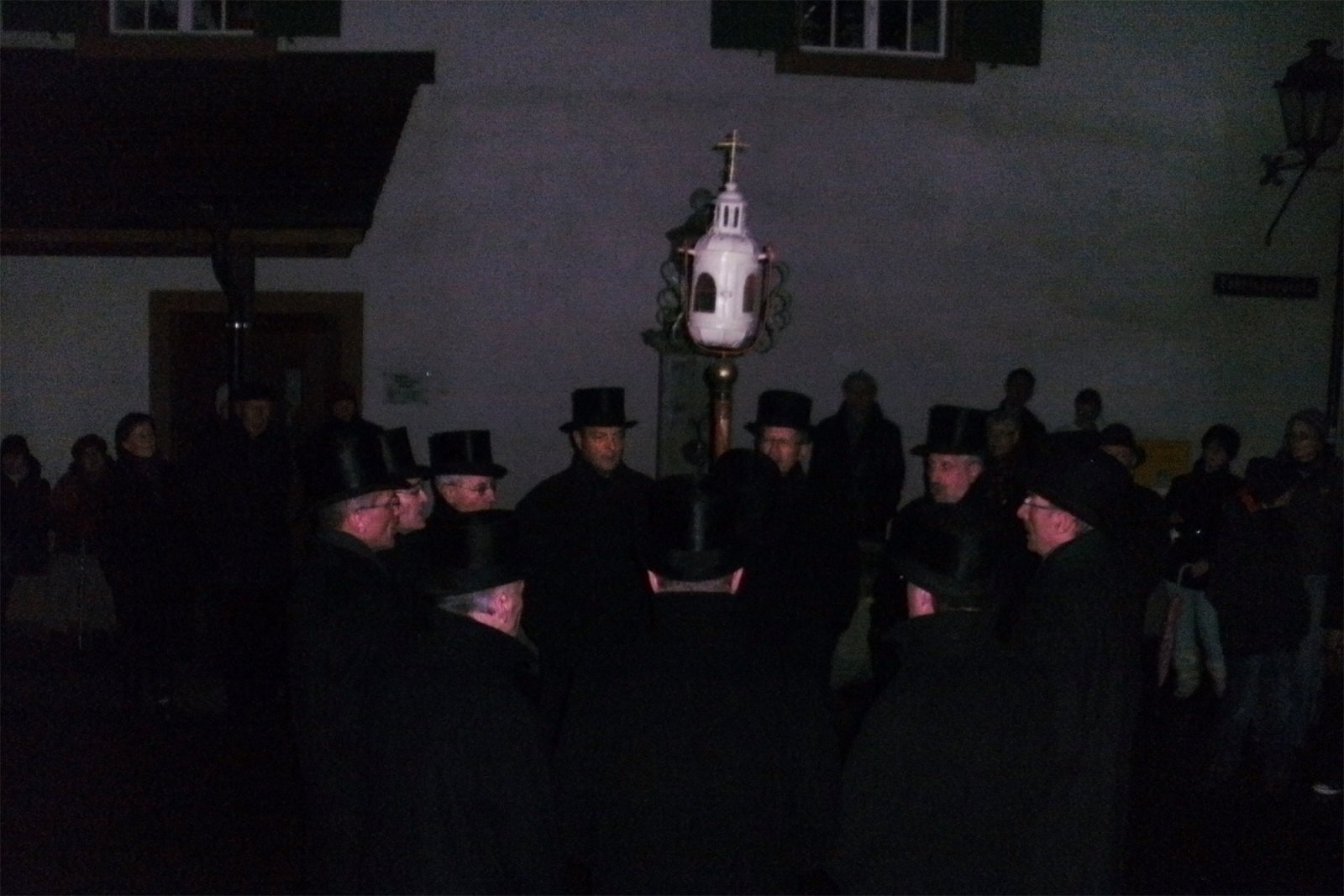
Altjahrsesu in Schwarzenburg
Possibly one of the most symbolic living traditions for New Year’s in Switzerland is Altjahresesu. Literally, the cryptic name of this custom means “Old Year Donkey” where the donkey symbolizes the bygone year and acts as a scapegoat.
In practical terms, a local would dress as a donkey, just to be beaten and driven out of town by a group of symbolic figures. For one, there is a bride and groom who stand for the new year. Also, there is a priest and his nemesis, the devil. And finally, among many others, a two-faced woman: the so-called Hinnerefürfraueli has a nice face and an ugly face depicting the new and the old year. This tradition takes place on New Year’s Eve around 8 PM.
Glümeras in Scuol
In the Lower Engadine, the residents of Scuol will construct small boats by placing candles in pieces of bark or walnut shells. Hundreds of these boats are floated in Scuol’s fountains along the Stradun street.
Glümeras is a festival of lights which might be rooted in a Pagan ritual to mark winter solstice. It is also a place for the locals to gather and warm up with a cup of mulled wine.
Silvesterklausen in Appenzell Ausserrhoden
In the regions of Urnäsch, Schwellbrunn, Hundwil, Waldstatt and Stein, Silvesterklausen is a tradition dating back to 1663. It takes place twice a year: on December 31 (New Sylvester according to the Gregorian calendar) and on January 13 (Old Sylvester according to the Julian calendar).
From dawn, groups of men are out and about, visiting households and farms to deliver New Year’s wishes. It is believed that by ringing their bells, evil spirits of the old year are driven away. In exchange for their yodeling and bell-ringing, the groups are rewarded with mulled wine.
The Silvesterkläusen come in three styles: the Schöne, or pretty ones, feature women’s outfits and headdresses showing off entire miniature landscapes. The Wüeschte, or ugly ones, sport horrific costumes made of forest items and masks with animal teeth. And finally, there is a mixture of the two, the Schönwüeschte: this natural beast is dressed in twigs and leaves and has an iconic mask made of pinecones.
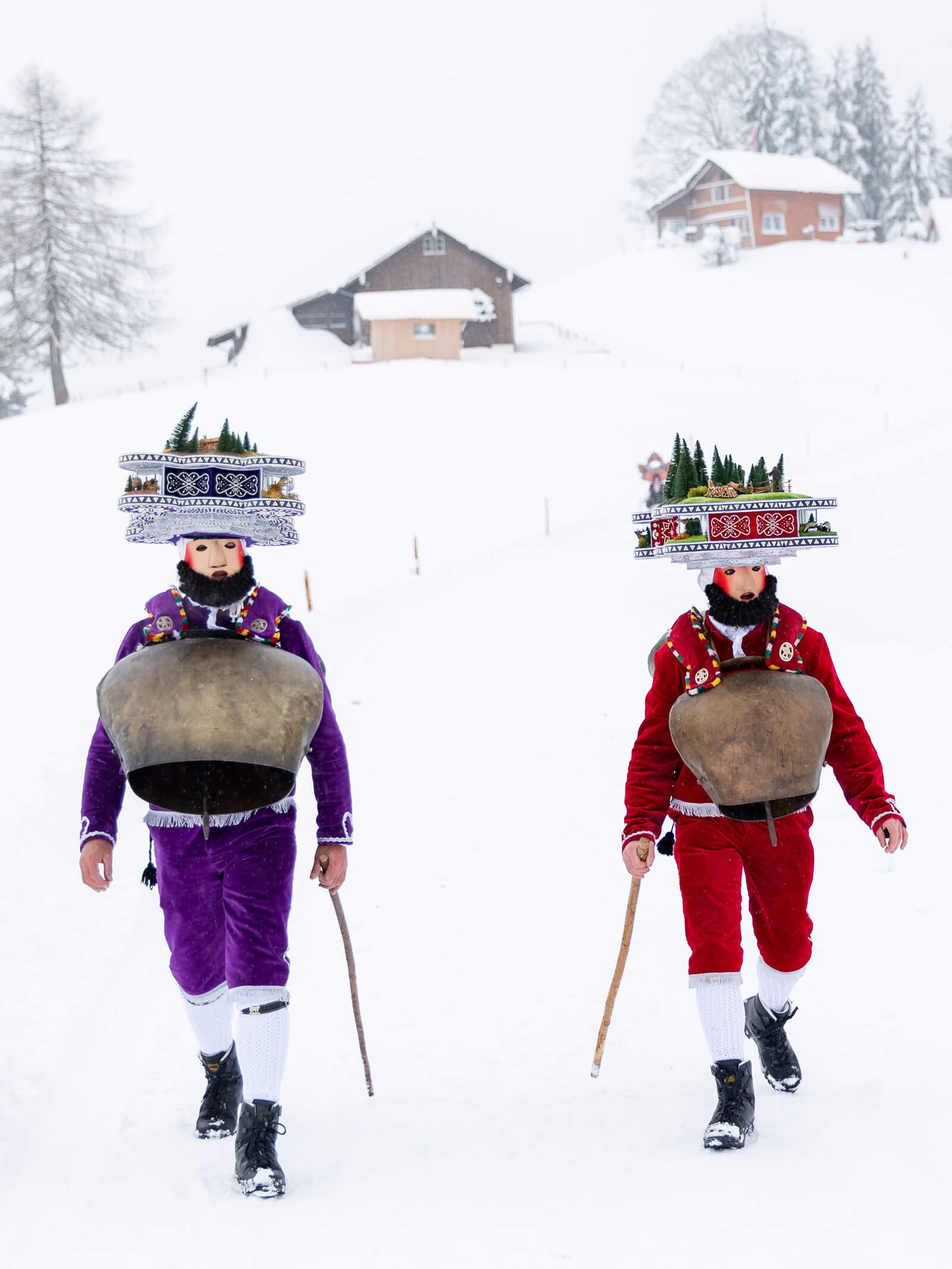
Silvesterchläuse and Schnappesel in Wald
It is believed that the tradition of Silvesterchläuse and Schnappesel in Wald is a pagan ritual. Each Silvesterchlaus wears a uniform with six bells strapped around the waist. (It weighs some 40 kg!) By producing rhythmic sounds, they are trying to attract good fortune for the new year.
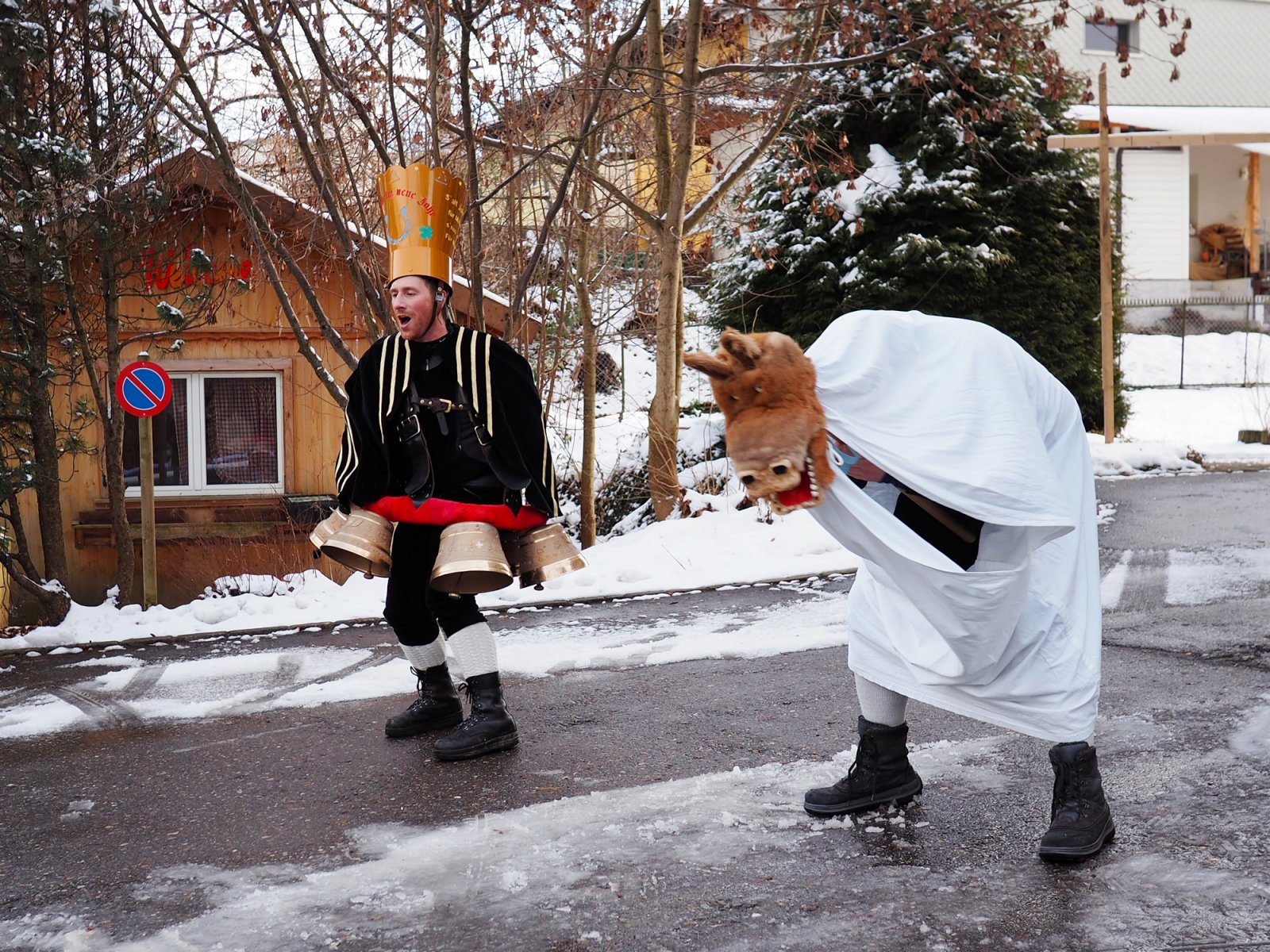
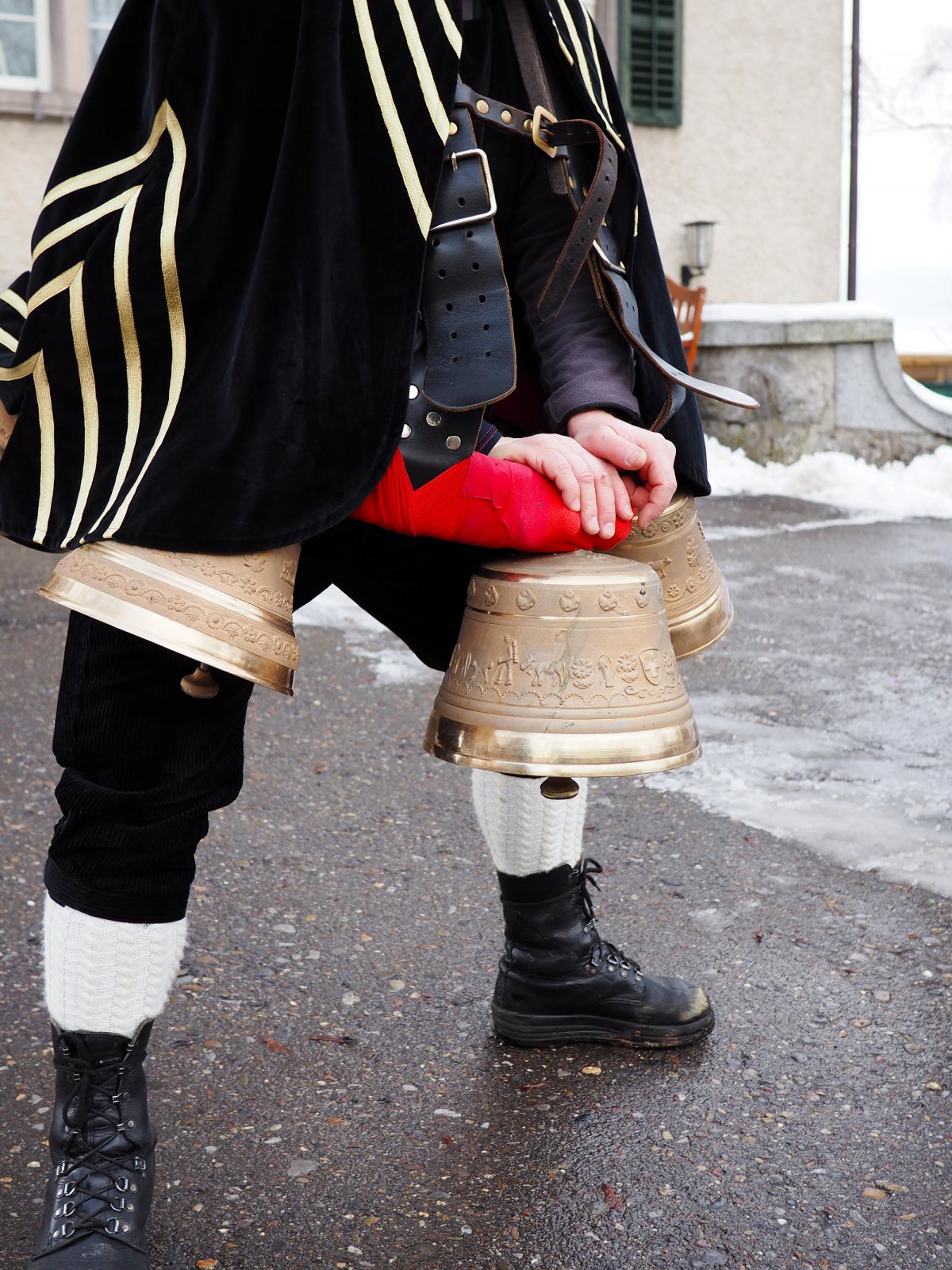
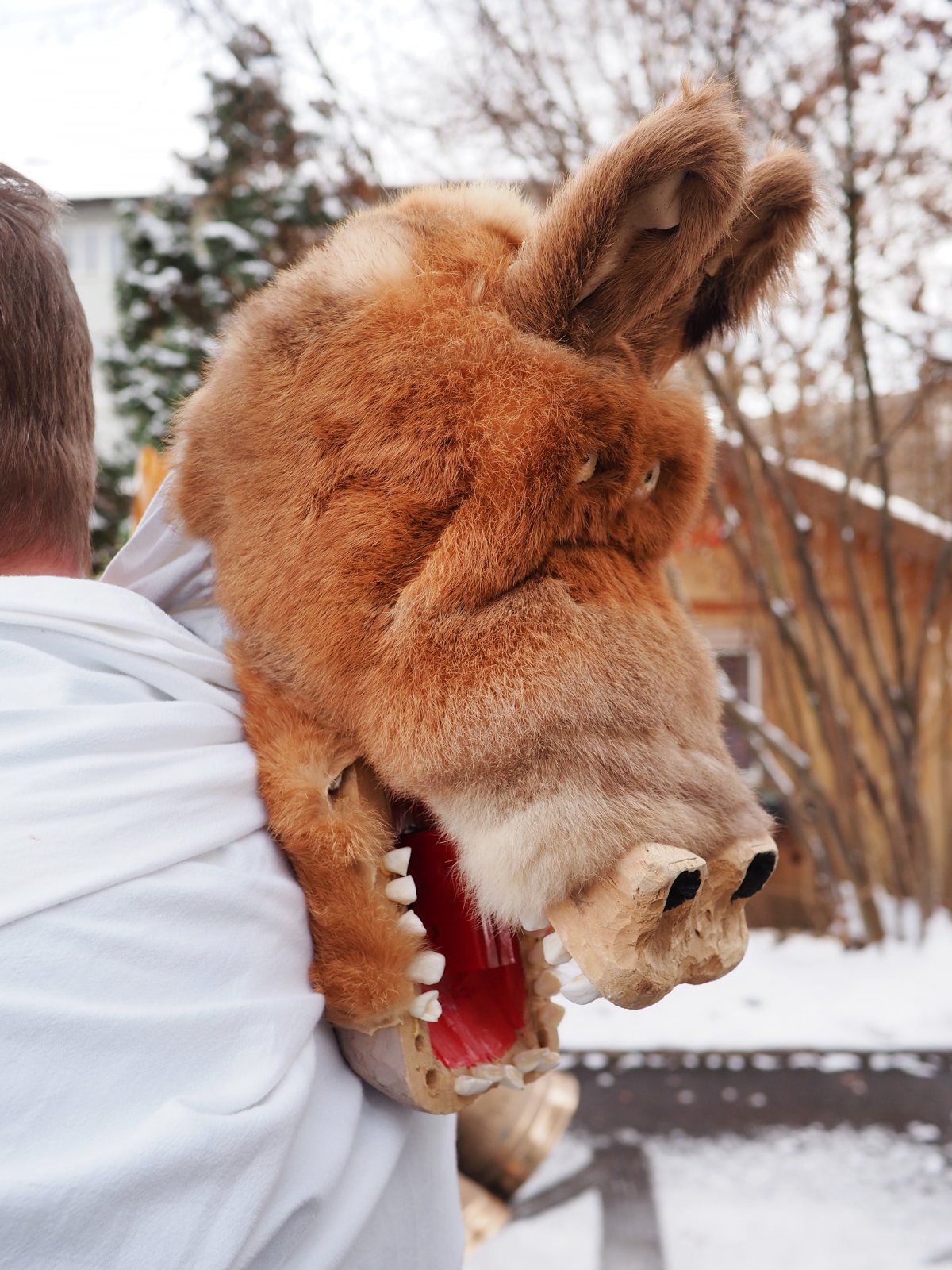
Each Silvesterchlaus has a snapping donkey as a sidekick. Its temper is unpredictable as it runs around and makes loud snapping noises. The Schnappesel is supposed to get rid of any bad spirits of the old year.
This spectacle can be witnessed in Wald, a small commune in the canton of Zurich. Every New Year’s Eve from about 1 PM, the nine pairs can be seen in the town as they move from door to door. By 6:30 PM, everyone meets up by the station for a parade to the final dance.
Sylvester Lantern Parade in Wil
Interestingly, this tradition is based on a change in the fire code of Wil. Back in 1818, the city ordered all households to hang a lantern outside should a fire break out. On New Year’s Eve between the hours of 6 PM and 7 PM, all lanterns had to be lit for their proper inspection by city officials. In the darkness of the night, those officials were likely led through the old town by lanterns.
The Sylvester Lantern Parade is a tradition born out of this inspection. Every year during this very time frame, the school children of Wil hold a parade through the old town. They are accompanied by music and singing. And by proudly showcasing their colorful paper lanterns, children get the chance to win prizes in the town’s award ceremony.
